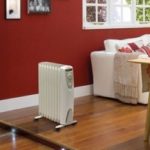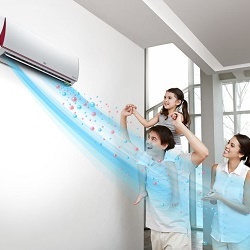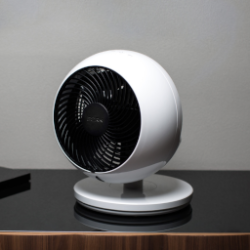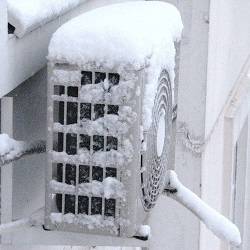The choice of electric convector for the cottage heating
Use electric convector for summer house heating is one of the most optimal and relatively profitable options. It is not always rational to install a stationary heating system or acquire expensive equipment, and yet additional heating may be required not only in winter. In the offseason and even in summer, low air temperatures or heavy rains can create uncomfortable conditions. The convector is quite simple to install and use, and, moreover, the operation of the device does not require special maintenance. Even children or elderly people can cope with it.
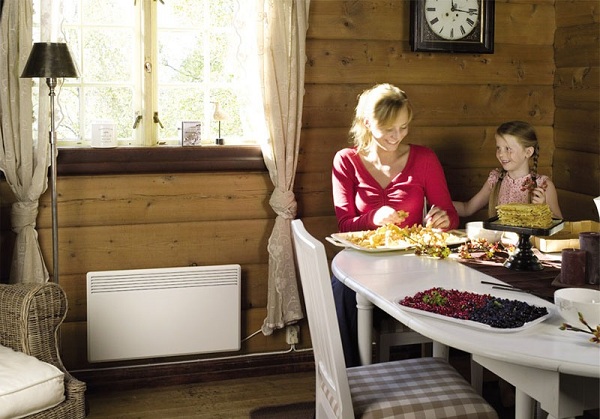
Content
What is electroconvector
The convector is a modern heating appliance.The principle of operation of the heater is in convection (movement) and the uniform distribution of air masses throughout the volume of the room in a natural way (for more details, see the articlehow does electric convector work). Externally, the device is a panel of a simple geometric shape, the metal (rarely plastic) case has structural holes on the top and bottom. The cold air enters through the lower slots, heats up and exits through the outlet grill located above.
Unlike usual fan heatersin most convectors no fan, due to which he works quietly or even silently. This design allows you to use the device at any time of the day. Adjustment of electricity consumption and heating intensity is carried out thermostat. Even in the budget models there are several modes of operation.
The thermostat controls the operation of the appliance, protects it from overheating. It turns off the device if the air temperature has reached the set point, or turns it on when the room becomes cool.

Pros and cons of convective heaters
Modern heaters have a number of compelling advantages. The main advantage is that after the purchase the device is completely ready for work: the user only needs to transport it to the dacha and connect it to the electrical grid.
The range of convectors is wide and varied. Any user can choose a model with the appropriate functionality and design. Manufacturers pay great attention to the appearance of devices, low-cost models, as a rule, are made in white color and simple design. There are also premium models, the front panels of which are trimmed with dark tempered glass or natural stone.
It is important to know! Convector heaters safe for human health. They are environmentally friendly, do not burn oxygen and do not overdry air.
The disadvantages of electroconvectors are somewhat subjective:
- The need for an outlet near the device. It is permissible to use an extension cord, but this can be inconvenient.
- Energy consumption of the device can not be called economical. In some models there are several modes of operation, and the thermostat allows you to set a minimum level of energy consumption, but this directly affects the intensity of heating.
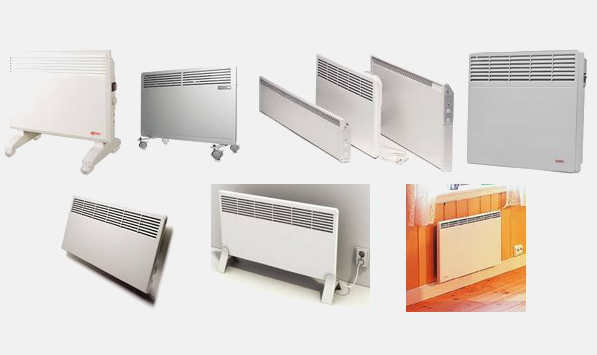
Varieties of electrical appliances
Convectors are divided into several types, depending on the type of installation:
- floor standing;
- universal;
- wall mounted;
- floor recessed.
Any kind of electric convector will be suitable for the heating of the dacha, but it should take into account the features of all types.
Outdoor convectors are mobile, they can be moved from one room to another. Such models will be an excellent solution if there is no access to the walls. Floor convector heaters are often equipped with a function of automatic shutdown when overturning. An additional plus is that they can be transported home if no one lives in the country at the time of winter.
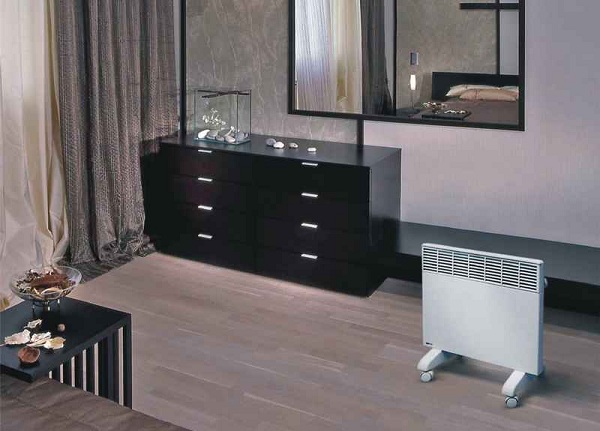
Wall mounted, as well as universal convectors are convenient because they do not occupy space on the floor and do not create typical inconveniences, like outdoor ones. The relatively low temperature of the surface of the case allows the device to be installed without fear of damaging the decorative walls. The package of universal convectors includes legs or rollers for floor placement and brackets for fastening to the wall.
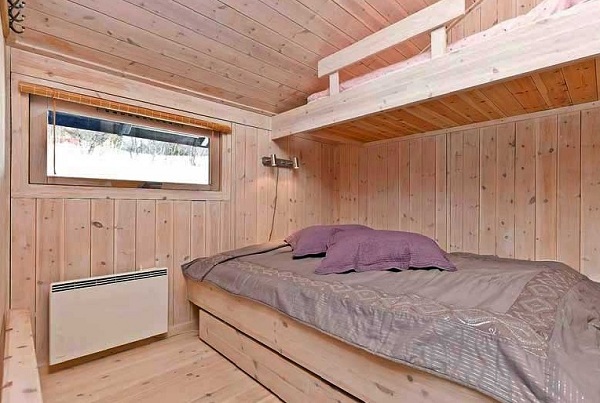
Embedded Heaters are installed only during the construction or repair of the floor; to install them, you need a niche with a depth of about 20 to 25 cm.This is a stationary type of electrical heating appliances, most often used in commercial premises: shopping centers, lounges, exhibition halls. Especially often they are used in rooms where the walls are completely made of glass.
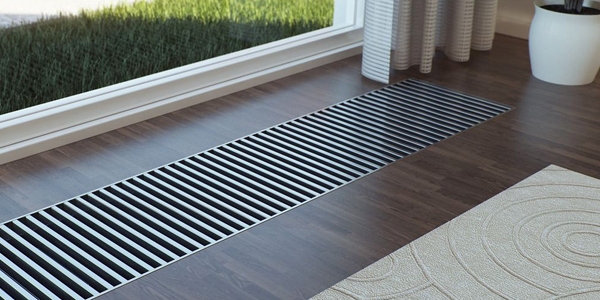
Types of thermostats
Maintaining the required temperature by using the thermostat, which is equipped with all modern models of convectors. This feature allows you to optimally operate the device and consume electricity. The user independently sets the appropriate temperature. As a rule, there are several modes of operation: "economical", "comfort", "automatic".
Electronic regulators multifunctional and allow you to set and save individual work settings, up to hourly temperature changes. The electronics error is minimal, but such thermostats are sensitive to voltage drops. If there are problems with wiring, which is commonplace in the private or suburban sector, you should pay attention to the second type of thermostat controllers.

Mechanical thermostats less accurate, have narrow functionality, but much more affordable. In addition, they are more resistant to high humidity than electronic ones. Another advantage of the "mechanics" is that the control is carried out manually. Electronics in rare cases can “stray or hang” completely turning off the device.
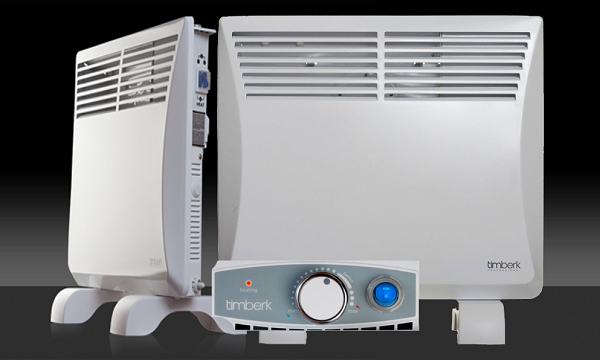
Types of heating elements
The heating element performs the main function of a convector heater. In total, there are three types of heaters:
- Needle (tape) elements are the most short-lived, but affordable.
- Tubular tena represent the optimal combination of price and quality, the only drawback of this type of heaters - the characteristic clicks when warming up.
- Monolithic elements are modern development, they are silent and reliable, but they are somewhat more expensive than ten or ribbon heating elements (for more details see the articletypes of heating elements in convectors).
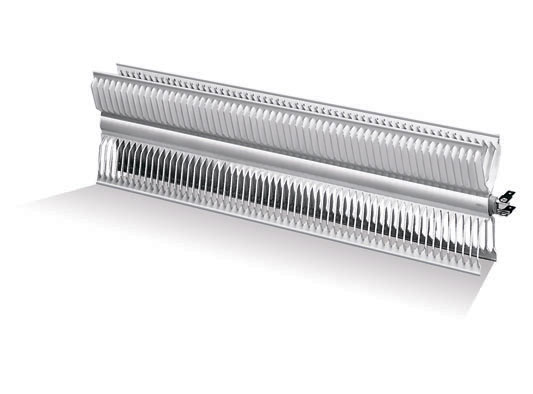
Monolithic heater
Additional options
Manufacturers equip models with various options for the most convenient use. The main functionality includes 2 - 4 modes of operation. Additional functions may be different, therefore, choosing an electric convector for the problem, you should determine which of them will be prioritized.
- Frost protection the convector automatically starts if the air temperature drops below 5 °. The option will be useful if there is a risk of the pipeline freezing.
- Auto power off when overturning the floor convector - if there are small children or pets in the house, this function will ensure safe operation.
- Electronic programmer will allow you to set the necessary parameters of work. The user will not have to constantly adjust the heating intensity, the electronics will independently change the temperature in accordance with the settings.
- Heating indication - not the most useful option, but it will allow you to determine at a distance whether the device is working at the moment.
- Built air ionizer works even with the heating turned off.
- Splash protection Most useful if the appliance is used in a bathroom, but such protection may be appropriate in any room, such as the kitchen.
- If the house uses multiple convector heaters, you can install single control module and regulate the operation of all devices simultaneously.
How to choose the optimal model
Selection of heating equipment for a country house is primarily associated with the determination of the required power of the unit. Based on practice, it is quite difficult to clearly determine what power to buy a convector. Most often, sellers use a simple calculation formula, multiplying the floor space (in square meters) by a factor of 0.1. The calculation is as follows:
20 sq.m. x 0.1 = 2 kW.
Consequently, for heating 20 square meters you need a convector with a capacity of at least 2 kW. If the room has high ceilings (above the standard 2.7 m), then the indicator is multiplied by an additional factor of 1.5:
2 kW x 1.5 = 3 kW.
In addition to space, other factors can affect heating:
- lack of interior decoration;
- lack of insulation on the floor and walls;
- constructive or other openings in the walls, windows, doorways, and cracks.
Naturally, if the room is absolutely not heated and not warmed, it will be difficult to warm it up the first time. A convector will only work if it will work without interruptions in winter.For example, a frozen room of concrete with an area of 30 square meters will have to be heated (up to + 10 °) for about 5 - 6 hours with a three-kilowatt heater, or 3 hours with two such heaters. To achieve a higher temperature will have to wait another couple of hours.
Note! It is recommended to purchase heating devices with a small power reserve, about 15% of the required.
This is done in order to not operate the appliance at the power limit regularly. In addition, when the external conditions change (for example, at low temperatures not characteristic of the climate zone), it is not necessary to buy additional equipment.
Let's sum up
Assessing the features of convector heating devices, we can conclude that most models will be the appropriate solution for a country house. And it does not matter whether the cottage is a solid country house, or is it a small building for rare visits.
It is important to exclude all sources of heat loss, to take care of wall and floor insulation. If it is intended to use the device as the sole source of heating, its failure in winter time threatens to disrupt plans or rest. Given that holiday homes are usually removed from the city limits, preference should be given to reliable models of convectors. The priority will be the presence of a monolithic heating element, a mechanical thermostat and a robust housing.

/rating_off.png)






